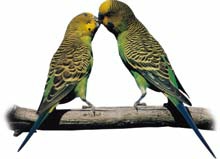中国四个地区酿酒葡萄果实及其葡萄酒质量特征的研究
STUDY ON CHARACTERISTIC QUALITY OF GRAPE BERRIES AND
WINES FROM FOUR WINE-GROWING REGIONS IN CHINA
作者:蒋 宝 导师:张振文
西北农林科技大学 葡萄与葡萄酒学2011届博士
摘 要
本论文以酿酒葡萄品种赤霞珠、梅鹿辄、蛇龙珠、品丽珠和霞多丽为试材,采用HPLC和SPME-GC/MS等方法对我国4个地区(宁夏玉泉营、山西乡宁、河北沙城和昌黎地区)、乡宁不同地形条件及年份间葡萄与葡萄酒的花色苷物质、非花色苷酚类物质、香气成分及抗氧化能力进行系统、深入的研究,阐明了4个地区葡萄与葡萄酒的品质特征。主要获得以下结论:
(1)4个地区赤霞珠和梅鹿辄果皮及相应葡萄酒中花色苷的组成和含量有一定差异,分别检测到22和23种花色苷物质,相应葡萄酒中分别检测到37和36种花色苷物质,其中二甲花翠素葡萄糖苷含量最高。玉泉营地区赤霞珠和梅鹿辄果皮花色苷含量最高,沙城和昌黎地区含量较低;此外,玉泉营地区赤霞珠和梅鹿辄葡萄酒中5种基本花色苷及二甲花翠素葡萄糖苷含量均占花色苷总量的比例最大,其次是乡宁地区。葡萄酒中花色苷组成不同的物质含量均低于23.9 mg ME/L,产地因素对赤霞珠葡萄酒花色苷的影响程度大于梅鹿辄葡萄酒。乡宁地区3种地形条件下的赤霞珠和品丽珠果皮花色苷组成基本相同,赤霞珠果皮花色苷总量随葡萄园海拔的上升而增加,但地形间的差异程度较地区间相对较小;坡地葡萄酒的花色苷总量高于谷地和平地。年份对乡宁地区赤霞珠和蛇龙珠果皮花色苷组分的影响较小,果皮花色苷含量受年份影响的程度低于产地和地形,葡萄酒陈酿后花色苷含量下降幅度因品种而异。
(2)在4个地区的赤霞珠和梅鹿辄果皮中均检测到29种非花色苷酚类物质,相应葡萄酒中分别检测到25和27种非花色苷酚类物质,地区间葡萄酒非花色苷酚类物质在组成和含量上的差异较其果皮明显。黄酮醇在葡萄果皮的5类非花色苷酚类物质中含量最高,所占比例也最大,其次是黄烷-3-醇。对葡萄酒中儿茶素和表儿茶素含量而言,玉泉营地区赤霞珠是乡宁地区的10倍,其他2个地区彼此相差不大;沙城地区梅鹿辄是乡宁地区的2倍,地区间的差异程度较赤霞珠低。乡宁地区3种地形条件下的赤霞珠和品丽珠果皮及相应葡萄酒的非花色苷酚类物质组成基本相同,表明地形对非花色苷酚类物质组成的影响程度要小于地区因素。坡地赤霞珠和品丽珠果皮黄烷-3-醇、黄酮醇和羟基苯甲酸含量均高于谷地和平地;儿茶素和表儿茶素是葡萄酒中含量最高的非花色苷酚类物质,其含量表现为坡地低于谷地和平地。年份对非花色苷酚类物质组成的影响较小,但对其含量有不同程度的影响。2009年的陈酒与2010年的新酒相比,其黄酮醇含量彼此间互有高低,而黄烷-3-醇含量有所下降。
(3)在4个地区的赤霞珠和梅鹿辄果实中分别检测到36和45种香气成分,其葡萄酒中均检测出52种香气物质,其中酯类和醇类是主要成分,含量较高的香气物质是异戊醇、异丁醇、苯乙醇、丙醇、乙酸乙酯和辛酸乙酯等。通过香气活性值的分析,沙城地区赤霞珠和乡宁地区梅鹿辄葡萄酒的主要香气特征物质是己酸乙酯,其他3个地区的葡萄酒主要的香气特征物质是辛酸乙酯;另外,己酸乙酯是谷地、高海拔坡地赤霞珠和3种地形条件的品丽珠葡萄酒主要的香气特征物质,低海拔坡地赤霞珠葡萄酒的特征香气物质是辛酸乙酯。2009年赤霞珠、蛇龙珠和霞多丽果实中醇类占果实香气总量的比例最大,醇类和酯类是其葡萄酒的主要香气成分。
(4)玉泉营地区赤霞珠和梅鹿辄葡萄酒的酚类物质含量最高、抗氧化能力最强,其次是沙城地区,乡宁和昌黎地区较低。除花色苷外,谷地赤霞珠和平地品丽珠果实及相应葡萄酒的酚类物质含量较高、抗氧化能力较强,这种关系在其葡萄酒中更为明显;随葡萄园海拔的上升酚类物质含量有下降的趋势。2个年份的研究表明谷地赤霞珠果实和相应葡萄酒的酚类物质含量最高,抗氧化能力也最强;霞多丽含量最低,抗氧化能力也最弱;坡地赤霞珠和蛇龙珠互有高低。
(5)酚类物质含量在葡萄果实和相应葡萄酒中呈对应关系;葡萄果实和相应葡萄酒中酚类物质的含量与其抗氧化能力存在正相关;除超氧阴离子清除法(SRSA)外,其它2种方法(DPPH和CUPRAC法)存在较好的协同性。
关键词 葡萄酒 黄土高原 多酚 抗氧化 香气
Abstract
In this dissertation,Cabernet Sauvignon,Merlot,Cabernet Gernischet,Cabernet Franc and Chardonnay were selected to study the effect of regions,terrains,vintages to the anthocyanins,non-anthocyanin phenolic substances,aroma composition and antioxidant activities of the grapes and wines by HPLC and SPME-GC/MS. Elucidating the quality characteristic of grape berries and wines from regions of Yuquanying,Xiangning,Changli and Shacheng. The main conclusions as followed:
(1) The total 22 and 23 kinds of anthocyanins were detected from grape skin of Cabernet Sauvignon and Merlot respectively in four regions,from wines of Cabernet Sauvignon and Merlot,37 and 36 kinds of anthocyanins were detected respectively in these regions,the malvidin-3-O-glucoside among anthocyanins detected had the highest amount. To Cabernet Sauvignon and Merlot wines,the highest contents of anthocyanins was found in Yuquanying region of Ningxia,their content in Shacheng and Changli regions of Hebei was lower;the ratioes of five essential anthocyanins/total anthocyanins and the malvidin-3-O-glucoside/ total anthocyanins in Cabernet Sauvignon and Merlot wines from Yuquanying region were higher,secondly was Xiangning region. Their contents with different composition in wines were lower than 23.9 mg ME/L,moreover,regional factor had less effect on the composition of anthocyanins of Cabernet Sauvignon wines than that of Merlot wines. The composition of anthocyanins in Cabernet Sauvignon and Cabernet Franc wines from three different terrain conditions was the same,the higher altitude vineyard had,the more content of anthocyanins Cabernet Sauvignon skin contained,the degree of discrepancy of anthocyanins which existed in different terrain conditions was less than that of different regions;the hillside vineyard had more contents of anthocyanins in wines than the flat and valley lands. There was little difference between two years grape skins about anthocyanins composition,and total contents of anthocyanins in skin was closely between two years,and with aging period of increasing,the composition of anthocyanins had no change,but total contents of anthocyanins was decreased obviously.
(2) The total 29 kinds of non-anthocyanins phenolic substances are detected both in Cabernet Sauvignon and Merlot grape skins coming from four regions,the corresponding wines contained 25 and 27 kinds of non-anthocyanins phenolic substances detected,respectively,the discrepancy of the content and composition of non-anthocyanins phenolic substances in 4 regional wines was less than that of their grape skins. The contents of flavonols among five kinds of essential non-anthocyanins phenolic substances were the highest in grape skins,secondly was the flavan-3-ols content. The content of catechin and epicatechin in Cabernet Sauvignon wine from Yuquanying region was almost 10 times than that of Xiangning region,their content in other 2 regional wines was not significant difference;their content in Merlot wine from Shacheng region was 2 times than that of Xiangning wine. Those grape skins and wines contained the same compositions of non-anthocyanidin phenolic substances from 3 different terrain conditions. It appeared that the contents of flavan-3-ols,flavonols and hydroxybenzoic acid in grape skins of slope are higher than those of flat and valley lands. The contents of catechin and epicatechin among non-anthocyanins phenolic substances were the highest in different wines,and their contents in slope land were lower than those of valley and flat lands. Years that had less influence on the compositions of non-anthocyanins phenolic substances,but influenced those contents in different degree. Compared to the 2010 wines,the contents of flavan-3-ol in the 2009 wines was lower,but the contents of flavonol was irregular each other.
(3) It had been detected 36 and 45 aroma compounds in the two kinds of grape berries which made from Cabernet Sauvignon and Merlot respectively,their corresponding wines contained 52 aroma compounds. Among these compounds,the most high content were isoamyl alcohol,isobutyl alcohol,phenethyl alcohol,isobutyl alcohol,ethyl acetate,ethyl caprylate,etc. Based on the OAVs values of aroma compounds,ethyl hexanoate was able to exert a strong influence on wine aroma: it was responsible for a major part of the aroma characteristics substance of Yuquanying Cabernet Sauvignon wine and Xiangning Merlot wine,ethyl octanoate was the aroma characteristics substance of other regional wines. Compared to the other two terrain conditions. The alcohol had the greatest proportion in total content of aroma in Cabernet Sauvignon,Cabernet Gernischet and Chardonnay berries in 2009,of which the esters and alcohols were the main components of the wines’ aroma.
(4) The contents of phenolic substances in Cabernet sauvignon and Merlot wines from Yu quanying region were the highest,secondly was Changli region;three antioxidant methods all indicated that the Cabernet sauvignon and Merlot wines from Yuquanying region had the highest antioxidant activity,followed by those of Shacheng of Hebei Province,while those of Xiangning and Changli regions had lower antioxidant activities. According to these results,except for the contents of anthocyanins,both the antioxidant activity and the contents of phenolic substances of grape berries and wines from sloping lands were lower than those of grape berries and wines from valley and flat lands. Besides,the contents of phenolic substances drop with the increase of cultural altitude. The phenolic contents of Cabernet Sauvignon berries from valley land and corresponding wine were the highest,followed by Cabernet Gernischet and Cabernet Sauvignon berries and wine from sloping land,Chardonnay is the lowest.
(5) The contents of phenolic substances between grape berries and wines exhibited corresponding relationship;the results showed that there was a positive correlation between phenolic content and antioxidant activity of grape berries and wines;except for SRSA method,a relatively tight coupling of the DPPH and CUPRAC assays.
Key words Wine Loess Plateau region Phenolic compound Antioxidant activity Aroma
免责声明:以上内容源自网络,版权归原作者所有,如有侵犯您的原创版权请告知,我们将尽快删除相关内容。

















